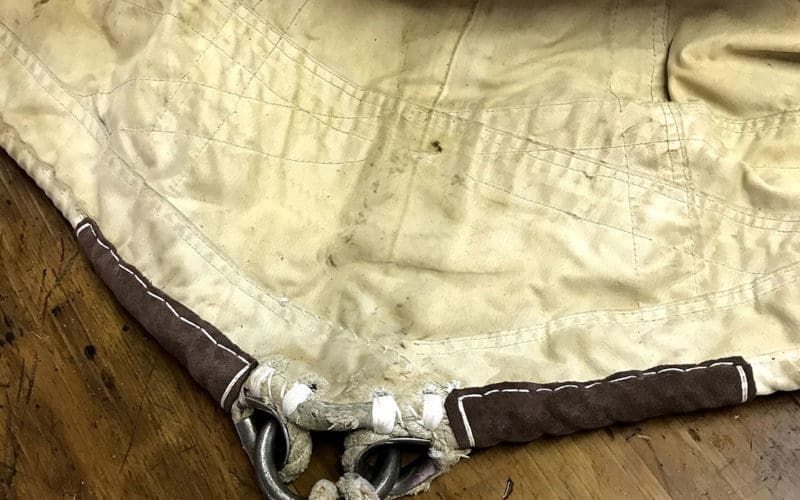
When sails fail due to sunlight damage, what parts of sails are most likely to fail? We asked a sailmaker, Mike Bartles of M&H Bartles Sailmakers in Boothbay, Maine, this question. According to Bartles, it usually isn’t the cloth but the stitching.
The most common damage to modern sails happens silently and invisibly: the steady beating of the sun. Sunlight contains ultraviolet (UV) light, which is more energetic than the wavelengths of visible light. This UV light has enough energy to slowly break down the fibers in nylon and polyester.
The stitching holding the panels together is what breaks down fastest, rather than the fabric itself. It’s crucial to keep an eye on the integrity of the stitching, as sails that aren’t repaired and maintained regularly will pull apart at the seams due to the sun damage.
“Basically, when thread is exposed to sunlight for years without being replaced,’ Bartles said, “you can drag your thumbnail across the stitching and it will break.”
When a seam “goes,” it is not the cloth ripping away from the thread, as one might expect, but the thread itself disintegrating.
“The sun damage on the stitching is the first thing to go because it sits proud of the cloth,” said Sam Sikkema, captain of the 128-foot, Maine-based schooner Victory Chimes. “If they start to come apart, they do even more damage and [with maintenance] you save a lot of the life of the sail.”
Restitching sails presents its own problems, however. Bartles, who recently repaired the 131-foot schooner Harvey Gamage’s sails, found a spot on the mainsail where the thread was holding up, but “the additional holes from the needle would do more harm than the fresh thread was worth.” It’s a tricky balance.
Ben Heselton-Clements

